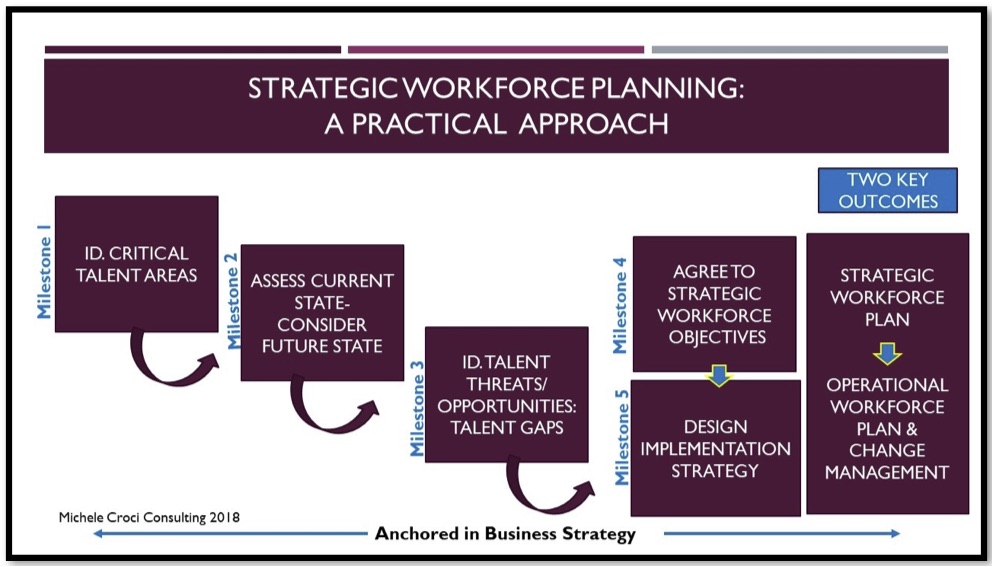Strategic Workforce Planning: Staking Out Future Workforce Success
Organizational success rests on the preparedness of its workforce. In turn, any business strategy can only succeed when we have the necessary talent to execute the strategy.
Simple yet complex. Strategic workforce planning (SWP) is an iterative process, anchored in the business strategy intended to insure we have the critical talent to perform and achieve our strategic objectives — not only for today, but also in the volatile, uncertain and complicated future scenarios we may face. This makes a better understanding of SWP crucial to achieving your desired business outcomes.
The True Value of the SWP Process
While the ultimate outcome of SWP is the strategic plan for your future workforce, the process itself provides other extremely useful results. The following are valuable secondary outcomes:
- Because the SWP process is anchored in the business strategy, the initial steps of the process reveal how well aligned the employees are to the business strategy. Is there an understanding and support of the enterprise strategy?;
- SWP identifies the change champions and the talent magnets, those key stakeholders that drive talent excellence;
- it clarifies the critical structure/value stream of the organization and the roles that will have the greatest impact on the business.
- it provides a comprehensive snapshot of the business’s current state using data and analytics, qualitative and quantitative; and
- it involves key stakeholders in a ‘futuring’ conversation that expands the leaderships’ vision of the future, thereby better preparing the organization for unpredictable futures.
A Practical Approach
So that brings us to the design and management of the SWP project. While the process of SWP is not complex (as you can see by the process map below), the organizational issues that surround it are.

As we begin SWP, we have to step back and look at the bigger picture. We need to assess organizational readiness, so here is a quick organizational readiness quiz for SWP (consider your organization as you respond):
- Do we have a clear business/organizational strategy that has been articulated to the employees? (Without a clear business strategy, workforce planning is unproductive.)
- What is the “burning platform” for this planning effort? Why is SWP important now?
- Do we have leadership that would actively support this effort? Do our leaders have the talent mindset and are passionate about talent-centric issues? (Check out our Talent Passion Gauge at TalentExperiment.org)
- Do we have access to the “know-how” (internal/external consultants or SMEs) who can guide us and manage the project?
- Are there key stakeholders who would be interested in creating a ‘guiding talent coalition’ that would be willing to provide some oversight and/or act as sponsors?
- Can we identify a department or area in the organization that could act as a pilot for SWP? How would you rate the area leader on the Talent Passion Gauge?
Michele Croci MaEd, SWP, CPT, MHCS is a senior consultant and human capital strategist with Talent Experiment.







